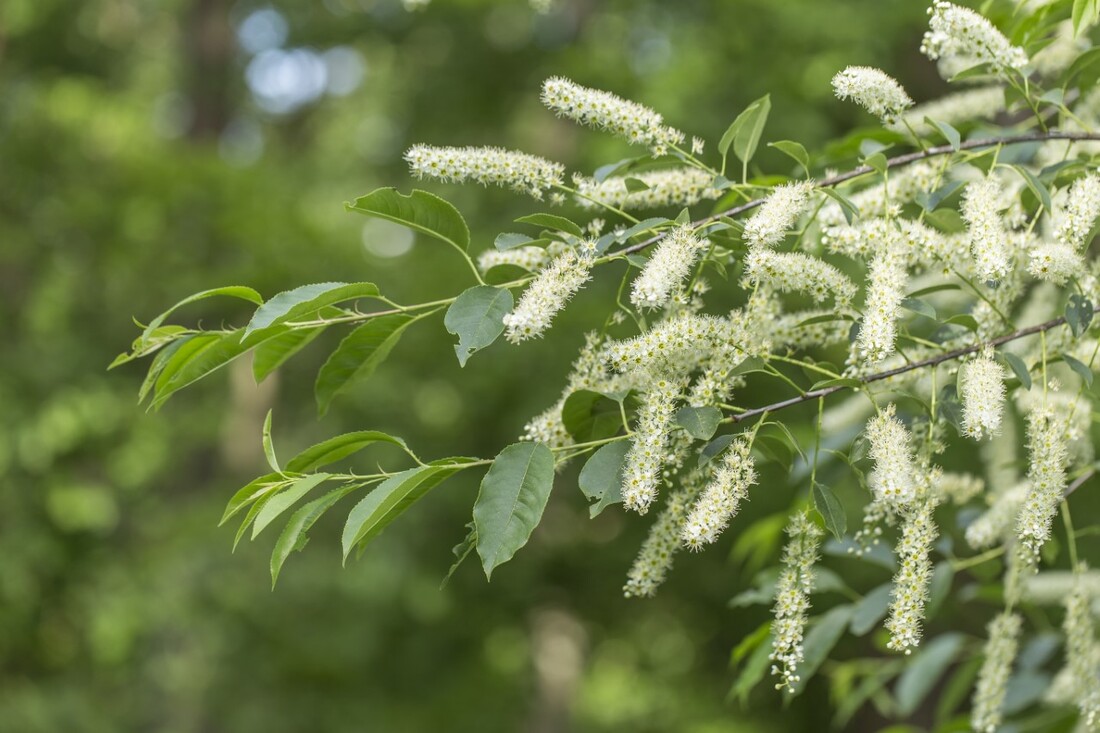Eastern tiger swallowtails (Papilio glaucus) are strong fliers, and can often be found right at the top of black cherry’s canopy (as high as 80 feet). Tiny green eggs are laid on the tree’s twigs and newly hatched larvae arrive cleverly disguised as bird droppings! Later instars turn green, with false eyespots to deter predators. The caterpillars feed on the leaves of black cherry, often spinning a silken mat on a leaf and curling up inside for shelter. The pupa is also well-camouflaged, resembling a dead leaf. Adults are frequently seen nectaring on a variety of flowers at the SBG, and males extract minerals from damp soil by puddling. (Photos of all life stages here: https://ipm.missouri.edu/garden/spring_newcomer_insect1.cfm)
Black cherry plays host to a wide array of wildlife, including over 400 species of butterflies and moths. In fact, according to the research of Dr. Douglas Tallamy (https://www.youtube.com/watch?v=k0_3BNFv_hY), native Prunus is second only to oaks in supporting lepidoptera. Now that’s a host with the most!
Author: Lisa Schneider
Photo: Ihorvozdetskiy


 RSS Feed
RSS Feed